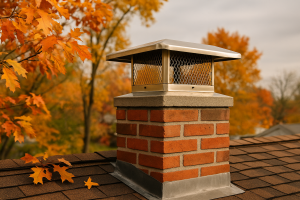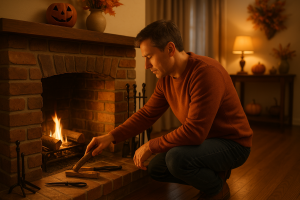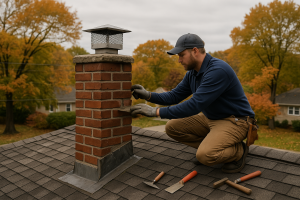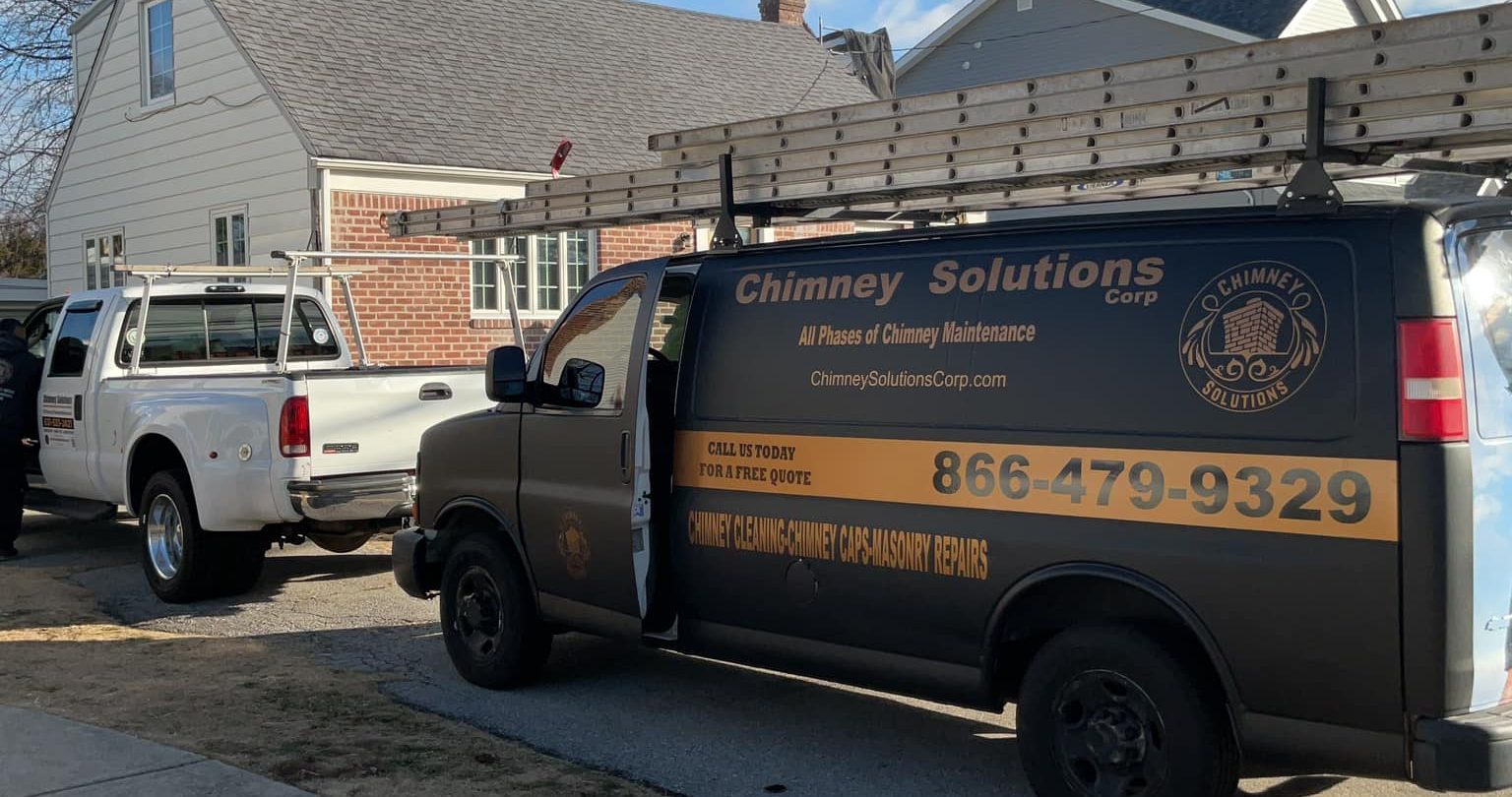Your chimney may be an essential part of your home’s heating system, but to wild animals, it can seem like a hollow tree—a warm, protected space perfect for shelter. From birds and squirrels to raccoons, chimneys without caps or damaged flues offer easy entry. But removing these animals—alive or dead—must be handled carefully. This guide will help chimney owners understand how to safely, ethically, and effectively manage animal intrusions, protect their chimney structure, and prevent repeat visits.
Signs There’s an Animal in Your Chimney
Knowing the signs of a stuck animal or nesting critter can save you time and potential damage:
- Scratching or rustling sounds—especially at night
- Bad smell from a dead animal or decomposition process
- Nesting materials like twigs or fur at the chimney base or fireplace doors
- Smoke drafting issues or airflow problems in an active chimney
These signs may point to anything from baby raccoons to chimney swifts, which are migratory birds federally protected in the United States.
🔗 For guidance on humane animal treatment, refer to the Humane Society.
Common Animals Found in Chimneys
The type of animal in your chimney affects both the removal process and your preventive plan. Here are the most frequent invaders:
- Birds – Often build bird nests near the chimney exit hole, especially swifts
- Bats and baby bats – Use dark chimneys for daytime roosting
- Squirrels – Chew through chimney walls or caps
- Raccoons – Excellent climbers that nest with babies
- Rodents – Can squeeze through cracks, bringing disease and odor
Each poses risks to your home, health, and chimney efficiency.
Why DIY Animal Removal Is Dangerous
While it may be tempting to “smoke out” an animal, DIY methods are rarely effective and can be unsafe or even illegal. Compromised safety, dead trapping, or causing distress to protected species are just a few concerns. Other risks include:
- Scratches or bites during removal
- Falling debris or damage to the chimney flue
- Carbon monoxide issues from blockages
- Fire hazards from nesting materials
Instead, use professional assistance with training in aspect of wildlife control.
Safe and Humane Animal Removal Practices
Ethical animal removal involves humane trapping, comfortable trapping tools, and, in many cases, one-way doors or cone excluders that allow animals to exit but not re-enter. Professionals may use bait and switch techniques such as peanut butter to lure animals out safely.
All wildlife control companies should follow protocols recommended by organizations like the National Wildlife Control Operators Association (NWCOA).
What to Do If the Animal Is Dead
If you notice a strange smell or bad odor from your fireplace, you may be dealing with a dead animal. Removal should be done quickly, as decomposition can attract insects, create health hazards, and stain the chimney masonry.
Always contact a licensed professional or Animal Removal Service trained in safe disposal and chimney sanitization. Never burn a fire to “clear it out”—this can result in smoke backup, chimney fires, or release of harmful bacteria.
Why You Need a Chimney Cap
One of the best forms of prevention is a properly installed chimney cap. A chimney with chimney caps proper prevents animals, rain, and debris from entering. Many professionals recommend custom chimney caps with mesh that resists animal removal attempts.
Caps also prevent damage from tree branches, nesting, and barbecue chimney debris.
Prevention Through Regular Chimney Inspections
A quality chimney care plan should always include annual chimney inspections. These inspections help detect vulnerabilities like:
- Cracks in the flue or masonry
- Signs of previous animal entry
- Broken damper seals
- Uncapped chimney tops or deteriorated mesh
These inspections can be done by chimney sweep services or certified chimney technicians as part of your regular maintenance schedule.
Who to Call for Professional Help
When facing a chimney pest problem, contact a chimney cleaning service that partners with a wildlife control company or specializes in chimney animal removal. Ensure they offer:
- Experience with chimney sweep logs, caps, and liners
- Compliance with local wildlife protection laws
- Positive BBB Business Profile and verified reviews
- Partnerships with chimney inspection companies and chimney sweep experts
Companies like Chimney Solutions work with licensed professionals to ensure both chimney cleaning and animal removal are handled with care.
Post-Removal Chimney Repairs
After animals are removed, a thorough inspection is key. Look for:
- Damage through chewing (especially from rodents)
- Chimney crown cracks or worn flashing
- Soot buildup or compromised chimney draft
- Issues in the chimney construction, such as chimney through holes or chimney wall erosion
This is the time to consider chimney masonry repair, CHIMNEY WATER PROOFING, or even chimney liner installation to reinforce your system.
Keeping Animals Out for Good
Prevent future animal issues by implementing these steps:
- Install or repair your chimney cap
- Trim nearby tree limbs that act as animal bridges
- Close fireplace doors when not in use
- Perform regular chimney sweeping
- Schedule a chimney maintenance service twice a year
Maintaining a clean chimney and reinforcing all possible entry points are critical to keeping your chimney free from unwanted animals.
Final Thoughts: Your Chimney Deserves Expert Care
Whether you live in Port Jefferson, East Hampton, or anywhere across Suffolk County, animals in your chimney are not just an inconvenience—they’re a threat to your safety. Don’t wait for signs of infestation to appear. Partner with a trusted chimney company like Chimney Solutions that offers both chimney & fireplace services and access to trained animal control professionals.
Let Chimney Solutions help you protect your home, improve chimney efficiency, and keep your fireplace system operating safely for years to come.



